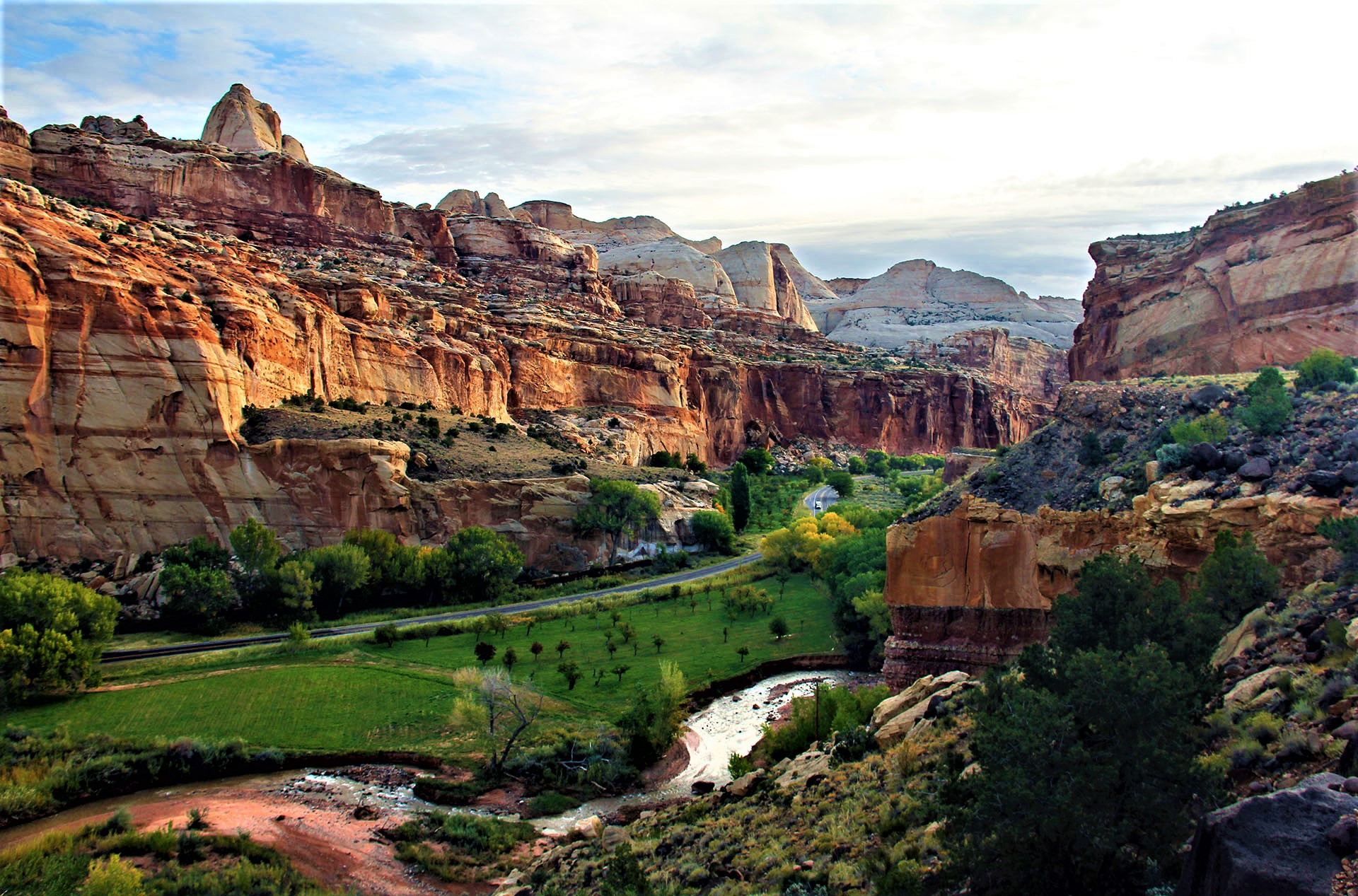Discovering Capitol Reef: A Comprehensive Guide To Utah's Hidden Gem
Capitol Reef National Park is a breathtaking destination that captivates visitors with its stunning landscapes and rich history. Nestled in the heart of Utah, this national park offers a unique blend of geological wonders, outdoor activities, and opportunities for exploration that are hard to find elsewhere. Whether you're a seasoned adventurer or a casual traveler, Capitol Reef has something to offer everyone. In this article, we will take a deep dive into the park's features, activities, and tips for making the most of your visit.
Established in 1971, Capitol Reef National Park spans over 241,000 acres, making it one of the largest national parks in the United States. The park is known for its striking rock formations, canyons, and lush orchards, which all contribute to a vibrant ecosystem. With its diverse landscapes, it is no wonder that Capitol Reef has become a favorite spot for photographers, hikers, and nature enthusiasts alike.
In this guide, we will explore the best things to do in Capitol Reef, its geological significance, tips for planning your visit, and much more. By the end, you'll be ready to experience all that this incredible park has to offer.
Table of Contents
- 1. The Geological Marvels of Capitol Reef
- 2. Outdoor Activities in Capitol Reef
- 3. Exploring the History and Culture
- 4. Tips for Visiting Capitol Reef
- 5. Best Trails and Scenic Drives
- 6. Wildlife and Conservation Efforts
- 7. Where to Stay and Eat
- 8. Conclusion and Call to Action
1. The Geological Marvels of Capitol Reef
Capitol Reef is renowned for its unique geological formations, which have been shaped over millions of years by natural forces. The park's name derives from the white domes of Navajo sandstone that resemble the Capitol building in Washington D.C.
Key geological features include:
- Waterpocket Fold: A unique wrinkle in the Earth's crust that spans 100 miles.
- Cathedral Valley: Known for its towering rock formations and stunning vistas.
- Fruita Historic District: Home to historic orchards and buildings dating back to the late 1800s.
2. Outdoor Activities in Capitol Reef
Capitol Reef offers an array of outdoor activities that cater to all interests. From hiking and rock climbing to stargazing and wildlife watching, there's no shortage of adventures waiting to be had.
Popular Activities
- Hiking: Explore the diverse trails ranging from easy walks to challenging hikes.
- Rock Climbing: The park features numerous climbing routes suitable for all skill levels.
- Stargazing: Capitol Reef is designated as an International Dark Sky Park, making it ideal for observing the night sky.
3. Exploring the History and Culture
The history of Capitol Reef is rich and varied, encompassing Native American heritage, pioneer settlements, and more. Understanding this history adds depth to your visit.
Historical Highlights
- Native American Inhabitants: The area has been inhabited by various Native American tribes for thousands of years.
- The Mormon Settlers: In the late 1800s, Mormon pioneers settled in the Fruita area, leaving behind a legacy of agriculture and community.
- Petroglyphs: Ancient rock carvings can be found throughout the park, offering a glimpse into the lives of early inhabitants.
4. Tips for Visiting Capitol Reef
To make the most of your visit to Capitol Reef, consider the following tips:
- Plan Ahead: Check the park's website for current conditions, closures, and events.
- Pack Essentials: Bring plenty of water, snacks, and sunscreen, as amenities are limited within the park.
- Visit Off-Peak Times: To avoid crowds, consider visiting during the shoulder seasons of spring or fall.
5. Best Trails and Scenic Drives
Capitol Reef boasts numerous trails and scenic drives that highlight the park's natural beauty.
Top Trails
- Hickman Bridge Trail: A moderate 2-mile hike leading to a stunning natural bridge.
- Chimney Rock Trail: A 1.5-mile round trip hike offering panoramic views of the surrounding landscape.
- Capitol Gorge Trail: A relatively easy hike that follows a wash through the gorge.
6. Wildlife and Conservation Efforts
Capitol Reef is home to a diverse range of wildlife, and conservation efforts are in place to protect these species and their habitats.
Common Wildlife
- Mule Deer: Often seen grazing in the park.
- Desert Bighorn Sheep: These elusive animals can be spotted on steep cliffs.
- Birdwatching: The park is a haven for birdwatchers, with many species inhabiting the area.
7. Where to Stay and Eat
When visiting Capitol Reef, there are several accommodation and dining options to consider. Whether you prefer camping or staying in a lodge, you'll find suitable choices.
Accommodation Options
- Capitol Reef Resort: Offers comfortable lodging with stunning views of the park.
- Fruita Campground: A popular camping spot located within the park.
- Nearby Towns: Check out accommodations in Torrey or Hanksville for additional options.
8. Conclusion and Call to Action
Capitol Reef National Park is a true hidden gem that offers a wealth of natural beauty, outdoor activities, and rich history. Whether you're hiking its trails, exploring its geological wonders, or simply soaking in the views, you're bound to create lasting memories. Don’t forget to share your experiences in the comments below and check out our other articles for more travel tips and guides!
As you plan your visit to Capitol Reef, remember to embrace the spirit of adventure and respect the natural environment. Happy travels!
Understanding The Melanistic Fox: Nature's Unique Marvel
Brad Davis: A Deep Dive Into The Life And Career Of A Hollywood Icon
Tiffany Cromwell: The Journey Of A Professional Cyclist


